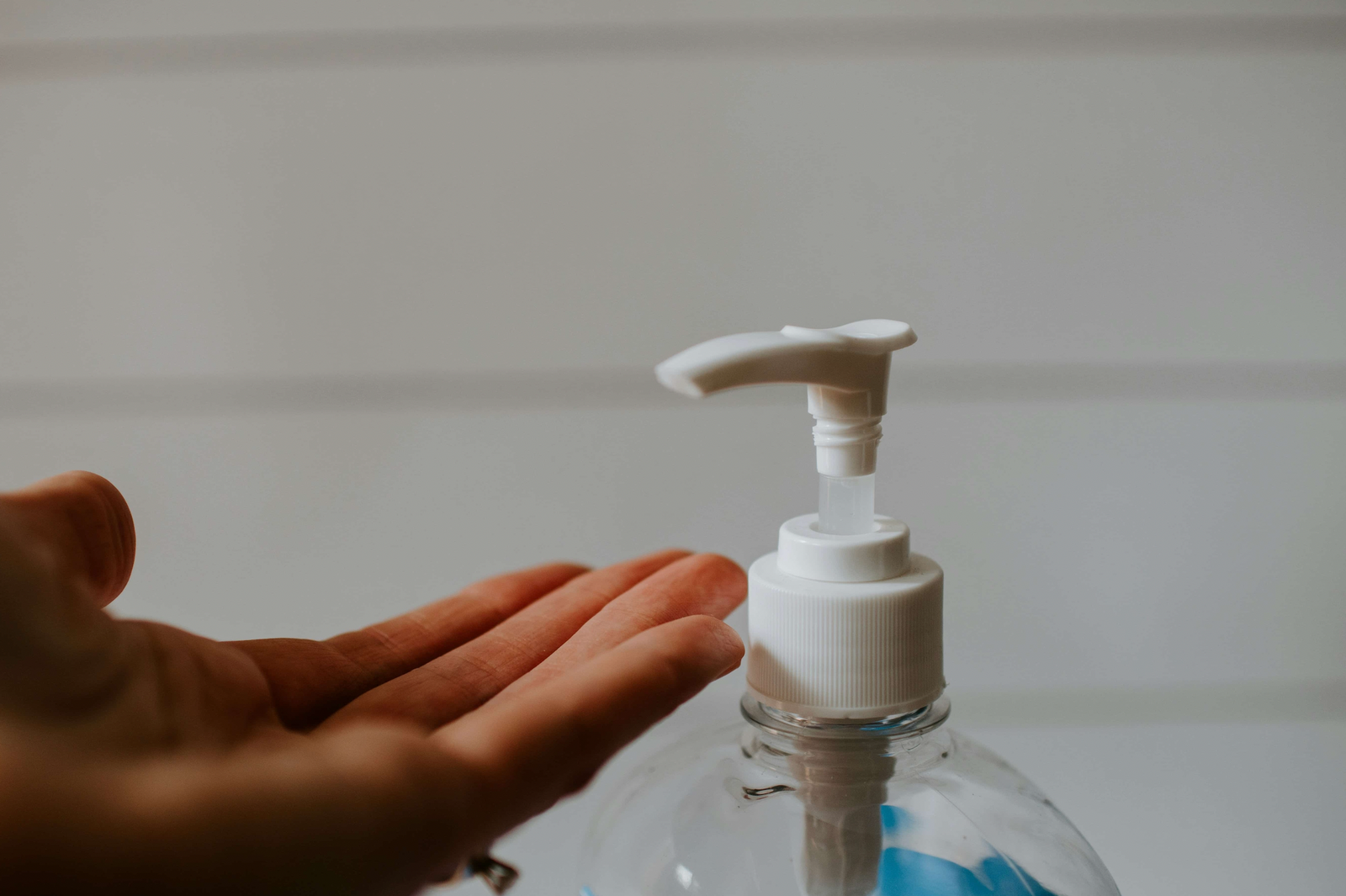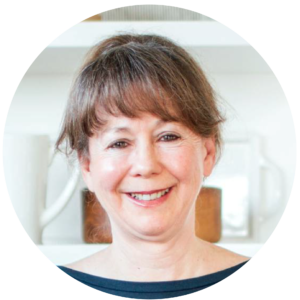What are Quats? Risks, Facts, & More

Quats, also known as quaternary ammonium compounds or Quacs, are a type of ammonia-based disinfectant chemical used in cleaning products, laundry products, disinfecting wipes, dishwashing soap, hand soap, wood products, water purification (algaecides, for example), textile production, and in other household, agricultural, and industrial products.
Like other disinfectants, such as bleach, Quats are also EPA-registered pesticides.
Quats are very effective at killing germs, including viruses, which has made them popular in household cleaning products.
However, they’ve also been shown potentially risky for respiratory, skin, and reproductive health as well as the environment.
This article shares everything you need to know about Quats including their history, the risks of using them at home, how to find products without Quats (and how to spot them on labels), and what to use instead when you need a safe and reliable disinfectant.
A Quick History on Quats
Quats and Quat-containing cleaning products may seem like modern inventions, but their use goes back almost 100 years when Nobel Prize-winning German pathologist Gerhard Domgk discovered their biocidal activity in the 1930s.
Biocides are antimicrobial chemicals. Their sole purpose is to kill unwanted or harmful living things such as plants (usually weeds), microbes, animals, viruses, fungi, etc.
Other examples of biocides include chlorine bleach, peroxygenase, and various pesticides, herbicides, fungicides, and antiseptics.
Quats work by adhering to their target, then breaking down their structure which destroys them. They also work as a preservative, a pesticide (diquat and paraquat), an anti-static compound, and a surfactant.
Excessive use of biocides harms humans, the environment, and the economy in many ways, the most obvious and well-documented being their role in contributing to superbugs and antibiotic resistance.
Quats were quickly adopted by the medical and surgical industries in the 1930s for sterilization and were then used in the agricultural and restaurants for disinfecting dairy equipment and utensils.
Since then, different types of Quats have been used in cleaning products, dryer sheets, eye drops, mouthwash, nasal sprays, shampoos, lozenges, wipes (baby, surface, car, disinfectant), and more.
Fast-forward to the 21st century and studies have shown the use of Quats increased before and after the 2020 pandemic, indicating greater human and environmental exposure.
So, are Quats safe, or not?
Well…since Quats came to the market before the EPA began regulating chemicals, they were exempt from the 1976 Toxic Substances Control Act. This means they were grandfathered in and can continue being used in consumer products without EPA safety testing.
Although more research is needed on Quat safety, they have been tested in numerous studies, and the results aren’t encouraging.
Next, we examine what we know about Quats and what we need to know more about to determine their safety in household products.
The Risks of Using Products That Contain Quats
As we’ve discussed in many articles, the overuse of sanitizers and disinfectants is a big problem.
Not only do they increase antibiotic resistance via the proliferation of superbugs, but they disrupt the human microbiome, can cause organ damage, negatively impact reproductive function, harm the environment, and can be especially dangerous for babies, children, and pets.
Studies have also shown that Quats leave a residue on surfaces (especially when used as a wipe), which greatly increases the risk of ingestion and absorption via the skin.
Examples of products containing Quats include:
- All-purpose cleaners
- Adhesive bandages
- Bathroom cleaners
- Baby wipes
- Baby wash and shampoo
- Body wash
- Building materials
- Contact lens cleaner
- Cosmetics
- Deodorant
- Dish soap and detergent
- Disinfectant wipes
- Dryer sheets
- Fabric softener
- Fabric spray
- Feminine hygiene products
- Floor cleaner
- Hair color
- Hair spray
- Hair gel, and other styling products
- Hand soap
- Hand sanitizer
- Nasal sprays
- Kitchen cleaners
- Oven cleaners
- Fingerpaint
- Perfume
- Pet shampoos
- Sunscreen
- Shampoos
- Shaving cream
- Toothpaste and other oral care products
- Wound wash
- And that’s just a short list!
As always, we do not share this information to induce fear or overwhelm but to show how essential it is that we learn to discern what’s in many household and personal care products.
We’ll share some powerful tools to help you keep Quats out of your home coming up!
The following are some documented known or suspected risks of using products that contain Quats, based on human, animal, and environmental studies (Sources: 1, 2, 3, 4):
- Antimicrobial resistance
- Congenital abnormalities
- Decreased mitochondrial function
- Developmental toxicity
- Disruption of cholesterol
- Disruption of metabolic function
- Inflammation
- Neurodevelopmental issues
- Respiratory issues (Quats are asthmagens)
- Reproductive toxicity
- Proliferation of drug-resistant bacteria
- Toxicity to certain aquatic life
As previously stated, more research is needed to fully understand the health and environmental implications of Quats used in various household, agricultural, and industrial products.
Are Quats Banned or Restricted?
Yes and no.
Ultimately, it depends on the type of Quat or combination of Quats (often, more than one type is used) and their purpose.
For example, Quats used as pesticides have their own list of laws and regulations, whereas Quats used in cleaning products may have no restrictions.
There has been some regulation of Quats used in personal care products, but those same Quats may still be allowed in oral care products.
In Europe, for example, a type of Quat known as BACs or benzylalkyldimethyl ammonium compounds are no longer approved in consumer hand and body washes, and Quarternium 15 is now banned in cosmetics.
California is leading the way in the United States by also banning the use of Quarternium 15 in cosmetics or personal care products made and manufactured in their state in 2025; discouraging the use of Quats in schools due to their asthmagen qualities; and adding Quats to the California Environmental Contaminant Biomonitoring Program’s list of priority chemicals.
Massachusetts Toxics Use Reduction Institute Science Advisory Board also recommended listing BACs and DADMACs as toxic or hazardous substances in 2021. If adopted, this would require businesses to report their annual use and plan for reduction.
Although regulation of Quats is extremely weak, these initiatives suggest regulators are beginning to recognize their potential harms.
How to Find Products Without Quats
It’s relatively easy to spot Quats on cleaning product labels. If a product is a synthetic chemical-based and uses words like:
- Disinfectant
- Sanitizer
- Kills 99.9% of germs
- Anti-viral
- Antibacterial
- Antifungal
- Antistatic
There’s a pretty good chance it contains Quats or another potentially harmful biocide.
The tricky part is that Quats aren’t listed as “Quats” or “Quacs”, they go by many different names, which we’ll discuss next.
Ingredients to Avoid
The following is a list of various Quat chemicals to watch out for on household product labels:
- 1-Propanaminium
- 3-amino-N-(carboxymethyl)-N,N-dimethyl-
- Alkyl dimethyl benzyl ammonium chlorides (C12-16)
- Alkyl dimethyl benzyl ammonium chloride (C14 60%, C16 30%, C12 5%, C18 5%)
- Alkyl dimethyl ethylbenzyl ammonium chloride (C12-14)
- Alkyl dimethyl ethylbenzyl ammonium chlorides (C12-18)
- Benzalkonium chloride
- Benzethonium chloride
- Cetromonium bromide (dryer sheets)
- Cocoamidopropyl PG-dimonium phosphate
- Denatonium benzoate
- Dialkyl dimethyl ammonium chloride
- Didecyldimethylammonium chloride
- Dioctyldimethylammonium chloride
- Guar gum hydroxypropyltrimonium
- Inner salts
- N-coco acyl derivs
- Panthenyl hydroxypropyl steardimonium chloride
- Polyquat
- Propyl ether
- Quaternium 15
For a full list of Quats by category (personal care, cleaning products, etc.), click here.
You can also take the easy route, by using our favorite consumer advocacy sites to help you weed out Quat-containing products:
- EWG Skin Deep allows you to plug in or scan a product and get a toxicity rating from 1-10 (1 being the least toxic and 10 the most toxic). We recommend only choosing products rated 1-2 on this app or site.
- Think Dirty app is also wonderful for vetting for cleaning, skin, beauty, and personal care products. We recommend products rated “0” on this app.
Ingredients to Opt for Instead
Quats may be effective at killing germs but that doesn’t mean they’re safe or even necessary for household use.
Instead, consider opting for these human- and environmentally-safer alternatives:
First, remove germs using a natural soap-based cleaner, like Branch Basics All-Purpose or Bathroom or liquid castile soap.
The CDC has done testing showing conclusively that cleaning with a soap or surfactant based cleaner removes all germs without leaving behind resistant bacteria.
Therefore, in many cases, removing germs versus killing them, is preferable to over-sanitizing and disinfecting.
However, sometimes disinfecting is necessary in addition to germ removal. Like when cleaning baby toys, if someone in the home has a contagious disease, for pet accidents, or when working with raw meat on surfaces.
In this case we recommend the following safer and less toxic disinfectants:
- 3% hydrogen peroxide
- 3% hydrogen peroxide + distilled white vinegar (used separately—spray one, let dwell, and wipe, then spray the other, let dwell, and wipe—and stored in separate bottles!)
- Dry steam cleaners
- Vinegar for E. Coli, salmonella, and listeria
- Boiling water
- Vodka - (70% or 140 proof)
- Steam cleaners
- Sodium percarbonate
Get the full scoop on these more natural disinfectants in: 8 Best Natural Disinfectants For Everyday Use.
Learn How to Toss the Toxins With Branch Basics
Quats are just one of thousands of untested chemicals (or even chemicals that are known toxins) used liberally in household products that are marketed as safe and effective.
This is why we are so passionate about educating individuals and families to be their own advocates by learning to vet products.
Sure, avoiding chemicals like Quats may seem scary and even overwhelming, especially if you’ve relied on them for years.
But with what you’ve learned in this article you have all the knowledge and tools you need to toss the Quats for good and replace them with less toxic alternatives.
We have loads of resources to help you avoid chemicals like these and create a healthier home, including our Toss The Toxins Online Course, hundreds of blog articles, podcasts, and a community of like-minded people across our social channels.
If you’re interested in trying Branch Basics as a MADE SAFE certified alternative to remove germs and clean your whole house (and your clothes, pets, car, deck, outdoor furniture, babies, kids, hands, body, stains, produce, and more) with just one Concentrate, check out our Premium Starter Kits (available in refillable plastic or glass).
New to Branch Basics? See: How To Get Started With Your Branch Basics Kit for a full written and video tutorial on how our super simple, biodegradable, and human-safe product line works.

Marilee Nelson
Marilee Nelson is an Environmental Toxins expert who has spent nearly 30 years advocating for the chemically-sensitive and chronically-ill. She is a Board Certified Nutritionist, Certified Bau-Biologist and Bau-Biology Inspector and specializes in Food As Medicine. She has helped thousands of families and individuals identify, heal and recover from toxic exposures and is on a mission to revolutionize the way American families view their health.








